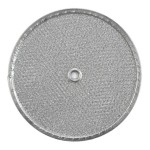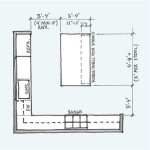Pull Down Kitchen Faucet: Stainless Steel - A Comprehensive Guide
The pull-down kitchen faucet, particularly those crafted from stainless steel, has become a ubiquitous fixture in modern kitchens. Their popularity stems from a combination of practical functionality, aesthetic appeal, and durability. Understanding the nuances of this type of faucet, from its construction to its maintenance, is crucial for homeowners seeking to make an informed purchase and ensuring long-term satisfaction.
Stainless steel, as a material choice for kitchen faucets, offers several key advantages. Its resistance to corrosion and rust makes it ideal for the moist environment of a kitchen sink. This inherent resistance translates to longevity and reduced maintenance. Furthermore, stainless steel is a non-porous material, making it less susceptible to harboring bacteria and germs. This characteristic contributes to a more hygienic kitchen environment. The aesthetic versatility of stainless steel is another significant benefit. It complements a wide range of kitchen design styles, from contemporary and minimalist to traditional and rustic.
The "pull-down" functionality refers to the faucet's spray head, which is attached to a retractable hose. This allows users to extend the reach of the faucet, enabling them to easily rinse dishes, clean sinks, and fill pots that are placed outside the immediate vicinity of the faucet base. The retraction mechanism typically involves a weight or magnetic docking system that guides the spray head back into its original position after use. The smoothness and reliability of this retraction mechanism are critical factors to consider when evaluating different pull-down faucet models.
Understanding the Components of a Stainless Steel Pull-Down Faucet
Dissecting a stainless steel pull-down faucet reveals several key components working in concert to deliver water efficiently and effectively. The body of the faucet, usually constructed from solid stainless steel or a stainless steel alloy, houses the internal mechanisms and provides the structural integrity of the fixture. The spout, which can be either fixed or swivel, directs the flow of water, and the handle controls the water temperature and pressure. The spray head, connected to the retractable hose, offers different spray patterns, typically including a stream and a spray function. The hose itself is usually made of a flexible, durable material such as reinforced rubber or braided nylon to withstand repeated pulling and retracting.
Furthermore, the internal cartridge, often ceramic, regulates the mixing of hot and cold water. Ceramic cartridges are known for their smooth operation and resistance to wear and tear, contributing to the longevity of the faucet. The connection hoses, typically flexible metal or braided stainless steel, connect the faucet to the water supply lines under the sink. These hoses must be properly installed and tightened to prevent leaks.
The docking mechanism, responsible for securing the spray head in place when not in use, can vary in design and sophistication. Some faucets utilize a simple weight system, while others employ magnetic docking technology for a more secure and reliable hold. The quality of the docking mechanism directly affects the user experience, as a poorly designed system can lead to the spray head sagging or detaching over time.
Key Features to Consider When Choosing a Stainless Steel Pull-Down Faucet
Selecting the right stainless steel pull-down faucet requires careful consideration of several factors. The first is the type of stainless steel used in the faucet's construction. 304 stainless steel is generally considered the industry standard for kitchen faucets due to its excellent corrosion resistance and durability. Cheaper alternatives may use lower grades of stainless steel or alloys that are more susceptible to rust and corrosion.
The height and reach of the spout are also vital considerations. The spout should be tall enough to accommodate large pots and pans, and the reach should be sufficient to cover the entire sink basin. Faucets with a swivel spout offer added flexibility, allowing users to direct the water flow to different areas of the sink.
The spray head design and functionality are also crucial. A well-designed spray head should offer a comfortable grip and easy switching between different spray patterns. Some spray heads feature a pause button that allows users to temporarily stop the water flow, which can be useful for conserving water while multitasking.
The handle design and placement are also important for ease of use. Single-handle faucets are generally more convenient for controlling both water temperature and pressure with one hand. The handle should be ergonomically designed and easy to grip, even with wet hands. The location of the handle should also be considered, as some faucets have handles on the side, while others have handles on the top.
Finally, the retraction mechanism should be smooth and reliable. The spray head should retract easily and securely into its docking position without sagging or detaching. The hose should be long enough to provide ample reach without being too cumbersome to retract. The quality of the retraction mechanism directly impacts the overall user experience and the longevity of the faucet.
Installation and Maintenance of Stainless Steel Pull-Down Faucets
Installing a stainless steel pull-down faucet can range from a straightforward DIY project to a task best left to a professional plumber. The installation process typically involves disconnecting the old faucet, attaching the new faucet to the sink, connecting the water supply lines, and testing for leaks. It is essential to follow the manufacturer's instructions carefully and to use the appropriate tools to avoid damaging the faucet or the plumbing.
Prior to installation, it is highly recommended to flush the water supply lines to remove any debris or sediment that may have accumulated. This will help to prevent clogs and ensure optimal water flow. The shut-off valves under the sink should be turned off before disconnecting the old faucet to avoid flooding.
Connecting the water supply lines requires careful attention to detail. The flexible hoses should be securely attached to the faucet and the shut-off valves, and all connections should be tightened with a wrench. It is important not to overtighten the connections, as this can damage the hoses or the valves. Teflon tape can be used on the threads of the connections to create a watertight seal.
Once the faucet is installed, it is essential to test for leaks. Turn on the water supply and carefully inspect all connections for any signs of water leakage. If leaks are detected, tighten the connections or replace the Teflon tape. It may be necessary to hire a professional plumber to address more complex leaks.
Maintaining a stainless steel pull-down faucet is relatively simple, but regular cleaning is essential to prevent the buildup of water spots and mineral deposits. A soft cloth and a mild detergent are typically sufficient for cleaning the faucet. Avoid using abrasive cleaners or scouring pads, as these can scratch the surface of the stainless steel.
To remove water spots and mineral deposits, a solution of equal parts water and white vinegar can be used. Apply the solution to the faucet with a soft cloth and let it sit for a few minutes before rinsing with water and drying with a clean cloth. For more stubborn stains, a commercial stainless steel cleaner can be used.
The spray head should also be cleaned regularly to prevent clogs. The spray head can be detached and soaked in a solution of vinegar and water to remove mineral deposits. A small brush can be used to clean the spray nozzles. The hose should also be inspected periodically for any signs of wear and tear.
In summary, the stainless steel pull-down kitchen faucet stands as a durable, functional, and aesthetically pleasing option for modern kitchens. By understanding its components, key features, and proper maintenance, homeowners can make informed decisions and ensure years of reliable performance from this essential kitchen fixture.

Single Handle Pull Down Kitchen Faucet In Stainless Steel Kraus

Alfi Brand Ab2028 Single Hole Pull Down Stainless Steel Kitchen Faucet

Glacier Bay Carla Single Handle Pull Down Sprayer Kitchen Faucet In Stainless Steel Hd67826 0008d2 The Home

Commercial Style Pulldown Kitchen Faucet Kraus Usa

Polished Chrome Stellen Lg529 Sac 1 Handle Pull Down Kitchen Faucet Pfister Faucets

Glacier Bay Market Single Handle Pull Down Sprayer Kitchen Faucet In Stainless Steel Hd67551 0308d2 The Home

Beasley Single Hole Pull Down Kitchen Faucet Signature Hardware

Fontana Chatou Stainless Steel Pull Down Kitchen Faucet With Assistive Touch In Matte Black Finish

Vigo Gramercy Pull Down Kitchen Faucet

Stainless Steel Avanti F 529 7ans 1 Handle Pull Down Kitchen Faucet Pfister Faucets








